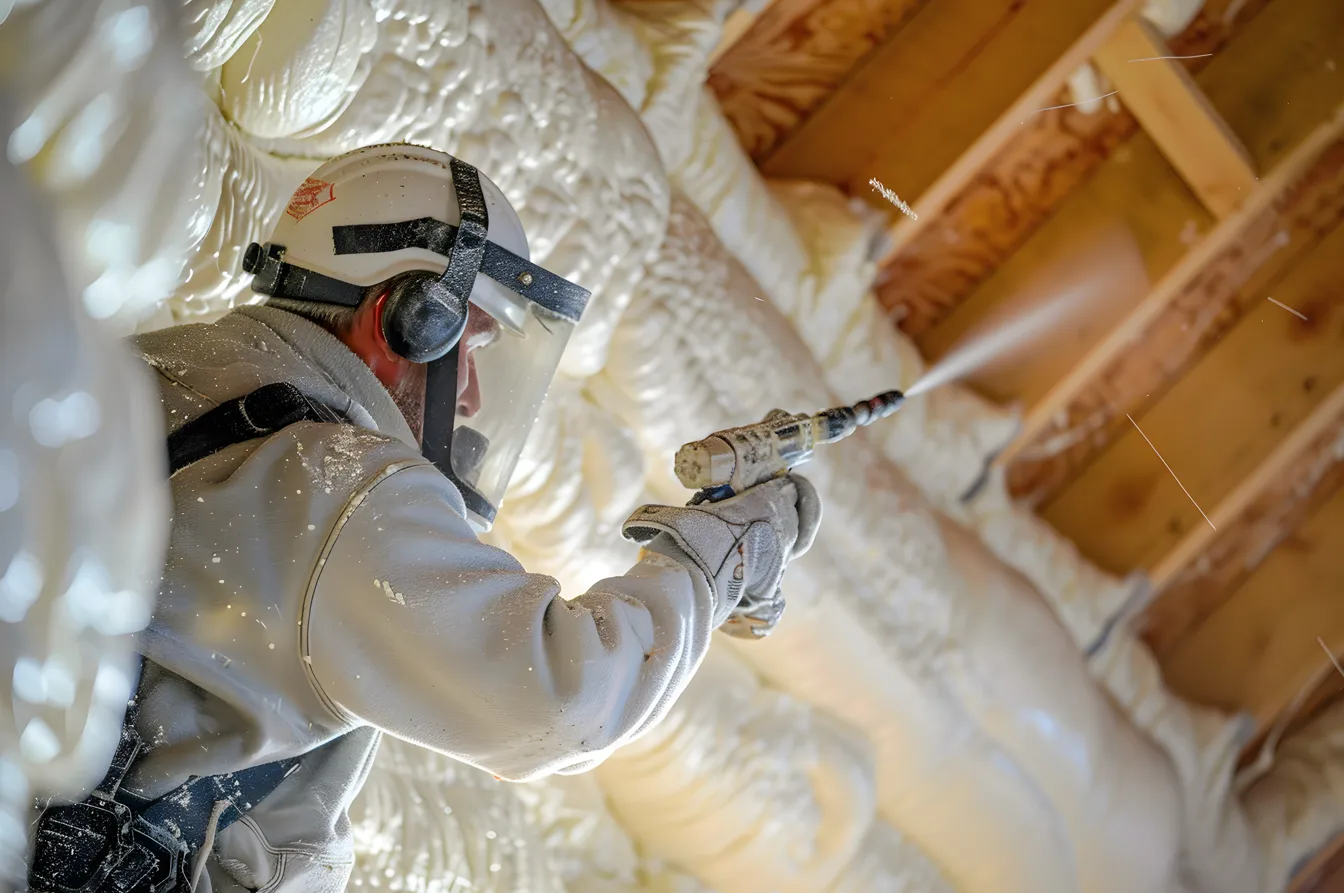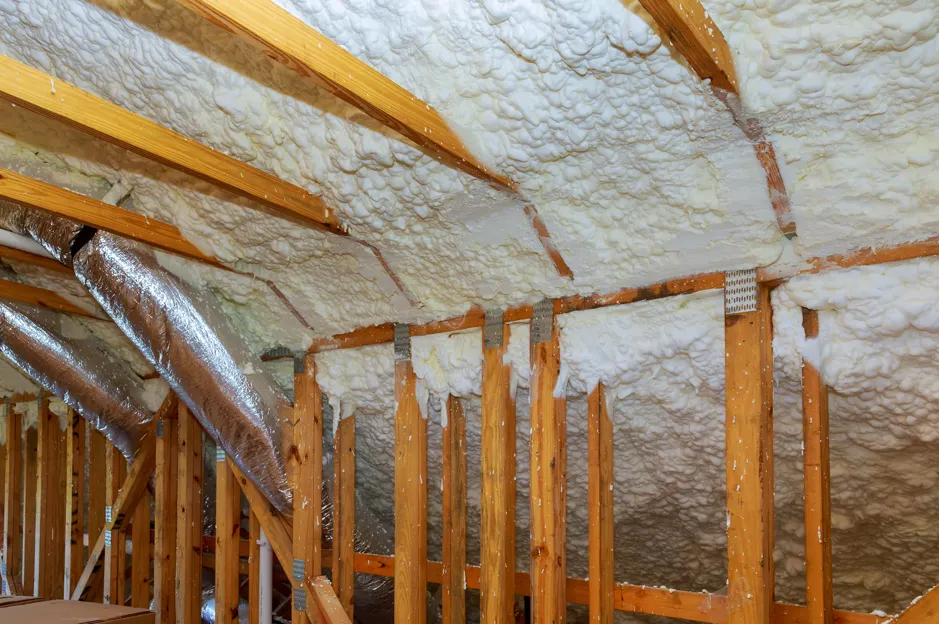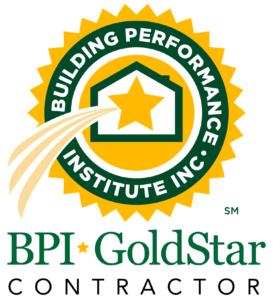As homeowners look to improve energy efficiency and comfort in older properties, spray foam insulation has emerged as a popular solution. Older homes often come with unique insulation challenges, including air leaks, outdated materials, and uneven surfaces. Spray foam insulation offers an innovative way to address these problems, but it also presents specific challenges that must be considered before installation.
Foam Masters USA specializes in high-quality spray foam insulation services, helping homeowners maximize energy efficiency while preserving the structural integrity of their older homes. This guide explains the benefits, challenges, and best practices of spray foam insulation for older properties, providing a comprehensive resource for informed decision-making.
Understanding Spray Foam Insulation
Spray foam insulation is a versatile material applied as a liquid that expands to fill gaps, cracks, and cavities within a home’s walls, attic, or crawl spaces. It provides both thermal insulation and an effective air barrier, creating a sealed environment that prevents heat loss, drafts, and moisture intrusion.
There are two primary types of spray foam insulation used in residential applications: open-cell and closed-cell. Open-cell foam is less dense, providing flexibility and soundproofing benefits, while closed-cell foam is denser, offering higher R-values per inch and structural reinforcement for walls. Both types can be beneficial in older homes, depending on the specific application and insulation needs.
Why Older Homes Need Spray Foam Insulation?
Inefficient Existing Insulation
Many older homes were built before modern building codes established energy efficiency standards. Traditional insulation materials such as fiberglass or cellulose may have degraded over time, leaving gaps and reducing their effectiveness. Spray foam insulation can penetrate these hard-to-reach areas, creating a continuous barrier that significantly improves thermal performance.
Air Leaks and Drafts
Older homes often have gaps around windows, doors, baseboards, and plumbing penetrations. Even small cracks can result in substantial energy loss, higher utility bills, and uneven indoor temperatures. Spray foam insulation expands to fill these voids, reducing drafts and creating a more comfortable living environment.
Moisture Control
Older homes may be prone to moisture intrusion due to aging foundations, roof leaks, or inadequate ventilation. Spray foam, particularly closed-cell types, provides a moisture-resistant barrier that reduces the risk of mold, mildew, and wood rot. By addressing both air leaks and moisture problems simultaneously, homeowners can protect their homes’ structural integrity.
Benefits of Spray Foam Insulation in Older Homes
Enhanced Energy Efficiency
By sealing gaps and providing high R-values, spray foam insulation reduces heat transfer through walls, ceilings, and floors. This results in more stable indoor temperatures, less reliance on heating and cooling systems, and lower energy bills. Over time, the savings can offset the initial cost of installation.
Improved Indoor Comfort
Spray foam insulation eliminates cold spots, drafts, and uneven temperatures common in older homes. Open-cell foam also dampens sound, making interiors quieter and more comfortable. Homeowners can experience a noticeable improvement in comfort levels throughout the house.
Air Quality Improvement
Older homes may suffer from poor indoor air quality due to air leaks allowing dust, pollen, and pollutants to enter living spaces. By creating a tight seal, spray foam insulation reduces the infiltration of outdoor contaminants, contributing to healthier indoor air.
Structural Reinforcement
Closed-cell spray foam adds rigidity to walls and ceilings, reinforcing the structure of older homes. This is especially beneficial in properties where wooden framing may have weakened over time, as the foam enhances overall stability without significant alterations to the building.
Longevity and Durability
Unlike traditional insulation, spray foam does not sag, settle, or degrade quickly. Once properly installed, it can last the lifetime of the home, providing consistent performance year after year with minimal maintenance.
Challenges of Spray Foam Insulation in Older Homes
Initial Cost
Spray foam insulation typically costs more than traditional materials such as fiberglass or cellulose. While the long-term energy savings often justify the expense, homeowners must budget for a higher upfront investment.
Compatibility with Existing Structures
Older homes can present structural challenges, including irregular wall cavities, degraded framing, or limited access to certain areas. Spray foam must be carefully applied to avoid gaps, overexpansion, or damage to delicate structures. Professional assessment is crucial to ensure proper installation.
Potential Moisture Trapping
While spray foam helps prevent moisture intrusion, improper installation can trap moisture within walls or ceilings, leading to mold growth or wood rot. It is essential to address underlying water issues and use vapor-permeable materials where necessary to prevent moisture problems.
Specialized Installation Requirements
Spray foam installation requires professional equipment and expertise. Homeowners attempting DIY applications risk uneven coverage, poor adhesion, and safety hazards. Hiring a trained contractor like Foam Masters USA ensures precise application, safety compliance, and optimal performance.
Preparing Older Homes for Spray Foam Insulation
Before installing spray foam, older homes may require several preparatory steps to ensure a successful outcome.
Inspection and Assessment
A thorough inspection identifies air leaks, moisture issues, structural concerns, and areas with inadequate insulation. Inspecting crawl spaces, attics, and wall cavities allows contractors to create a customized plan that addresses the home’s specific needs.
Addressing Moisture and Structural Issues
Repairs may be necessary before insulation can be applied, including fixing roof leaks, improving drainage, or reinforcing wall framing. Spray foam should never be applied over damaged or waterlogged surfaces, as this can exacerbate underlying problems.
Choosing the Right Type of Foam
Selecting open-cell or closed-cell foam depends on the home’s insulation goals, structural conditions, and moisture exposure. Open-cell foam is ideal for soundproofing and interior walls, while closed-cell foam provides maximum thermal resistance and structural support.
Tips for Effective Spray Foam Installation
Although installation is best handled by professionals, homeowners can take steps to maximize effectiveness.
- Ensure the space is clean and dry before application.
- Remove any loose debris or old insulation that could interfere with adhesion.
- Work with certified contractors to achieve even coverage and proper thickness.
These simple considerations help prevent gaps, overexpansion, and future performance issues.
Also Read: DIY vs Professional Spray Foam Insulation
Spray Foam Insulation and Energy Savings
Reducing Heating and Cooling Costs
Spray foam’s high R-value minimizes heat transfer through walls and ceilings. In older homes with leaky windows and doors, the insulation compensates for inefficiencies, allowing heating and cooling systems to operate more efficiently. Many homeowners notice substantial reductions in monthly utility bills after installation.
Minimizing HVAC Strain
By reducing drafts and maintaining stable indoor temperatures, spray foam decreases the workload on heating and cooling equipment. This can extend the lifespan of HVAC systems, reducing maintenance and replacement costs.
Environmental Benefits
Lower energy consumption results in reduced greenhouse gas emissions, making spray foam insulation an eco-friendly choice. Homeowners can improve comfort while contributing to sustainability efforts.
Common Misconceptions About Spray Foam in Older Homes
“It Will Damage My Old Walls”
When installed correctly, spray foam does not damage existing walls or structural components. Professional contractors use controlled application methods to ensure minimal expansion pressure and precise coverage.
“Spray Foam Traps Moisture Everywhere”
Moisture trapping only occurs when installation is done improperly or underlying water issues are not addressed. With proper preparation and ventilation planning, spray foam effectively prevents unwanted moisture accumulation.
“It’s Only for New Construction”
Spray foam can be adapted to older homes with irregular cavities, retrofits, and complex layouts. Experienced installers can navigate challenging spaces to provide comprehensive insulation benefits.
Maintaining Spray Foam Insulation in Older Homes
Regular Inspections
Annual inspections help detect any areas where the foam may have shifted, settled, or been exposed to water damage. Early detection prevents small issues from becoming costly repairs.
Protecting Against Pests
While spray foam is generally pest-resistant, older homes may have pre-existing gaps that need sealing. Ensuring a continuous barrier prevents rodents and insects from entering.
Monitoring Indoor Humidity
Maintaining proper indoor humidity levels prevents condensation and preserves both spray foam performance and home integrity. Dehumidifiers or ventilation improvements may be necessary in certain areas.
Why Choose Foam Masters USA for Older Home Spray Foam Insulation?
Foam Masters USA provides professional spray foam insulation services tailored to the unique needs of older homes. Our team offers:
- Expert assessment of structural and insulation challenges
- Customized solutions using open-cell and closed-cell foam
- Safe and precise installation for maximum energy efficiency
- Long-term support and maintenance guidance
We combine experience, high-quality materials, and advanced equipment to ensure every older home receives insulation that improves comfort, efficiency, and durability.
Conclusion
Spray foam insulation offers significant advantages for older homes, including energy efficiency, enhanced comfort, improved air quality, and structural reinforcement. However, homeowners must consider the challenges, such as cost, specialized installation, and moisture management.
By working with experienced contractors like Foam Masters USA, older homeowners can enjoy the benefits of spray foam insulation while minimizing risks. Proper planning, assessment, and installation make it possible to transform aging properties into energy-efficient, comfortable, and well-protected homes.
For homeowners looking to upgrade insulation, reduce energy bills, and protect their investment, spray foam insulation represents a smart, long-term solution—especially when installed with precision and care.







